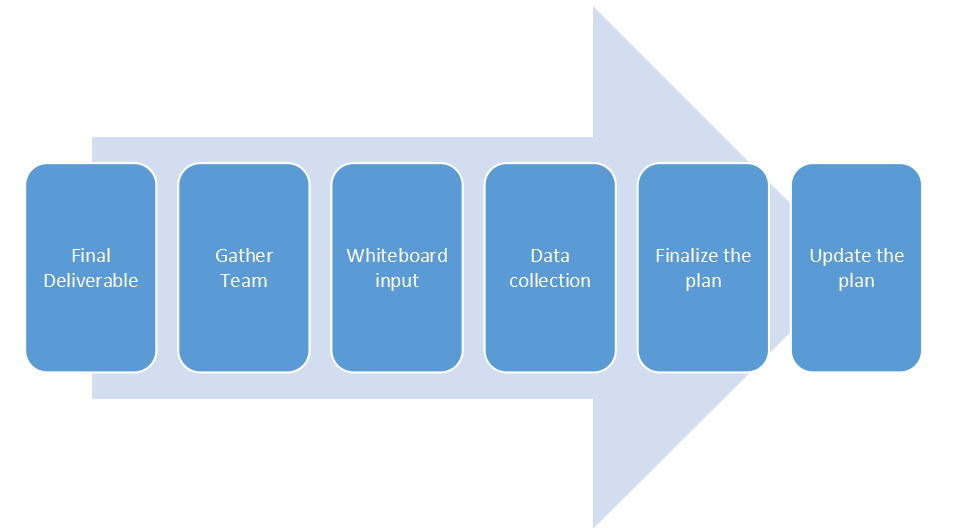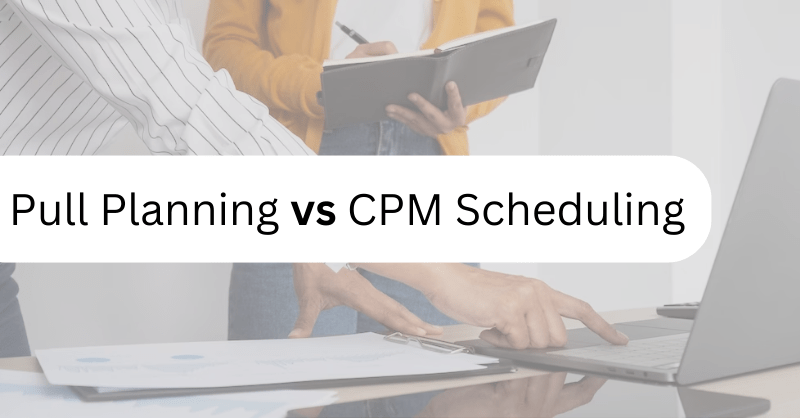Pull Planning vs CPM Scheduling, how do these planning methods compare between eachother?
“Failing to plan is planning to fail”
The truth is it is easier said than done.
Choosing the correct project planning and control approach along with the progress monitoring and control tools are important decisions that a planner must take early on and in a short period of time.
Depending on the nature of the project and the type of contract, the planner must decide on the best planning approach. Whilst some contracts, especially government contracts, will have a standard set of employer requirements for planning and reporting, a large portion of contracts allows for more freedom in the planning approach.
Pull Planning
Unlike the traditional Critical Path Method of scheduling or “CPM”, pull planning relies on internal stakeholder input by starting from the end product (the project) and going backward “backward pass” through the activities and sequence till the start date and hence “pulling the activities” to create a project plan.
Pull planning is a collaborative process that can help to get buy-in from all project participants using a backward pass, pulling activities into the process.
Pull planning is considered a lean process as it depends on direct input from the actual task owners and creates a flow, hence, typical repeated durations and redundancies are removed which results in the most compressed and closer to real-life scenario activity durations and plans.
So, How Does Pull Planning Work?

Like any planning approach the project scope, value, and estimated time of delivery need to be well-established and documented. The first and most important step is identifying and gathering the relevant internal stakeholders who will provide input, and more importantly, update feedback upon execution.
Internal stakeholders include:
- General foreman/ foreman or site Superintendent
- Site Engineer.
- Design Manager/ Technical lead.
- Project Manager.
- HSE Manager.
- Quality assurance and control – QA/QC Engineer.
Upon gathering the team, it is advisable to dedicate a “planning space” along with a whiteboard and sticky notes. Software tools can be used to accommodate these meetings, however it is more efficient to have a direct and hands-on approach as described.
The team members will use the sticky notes to put their activity requirements, namely; time required, resources, and any other special input. The sticky notes should then be placed on the whiteboard with the timeline reflecting any specific milestones or constraints. Whilst it is preferable to have the timeline in weeks, it is up to the planner the best fit time scale.
The concept behind pull planning is efficiency, so it should be noted that sticky notes are not a necessity and can be replaced by paper or whatever is preferred by the team. Overall, sticky notes are usually used, as they are easy to handle.
As the project planner, you must govern the process and make sure that:
- Critical and driving activities are identified.
- Each stakeholder is responsible for his input. For example, the mechanical project engineers cannot interfere with the structural engineer.
- All input must be dated, and preferably, color coded. All relevant identifications must be recorded in a common key legend.
- Keep in mind the movement of crews and the flow of resources.
Finally, wrap up the planning process by finalizing any changes and make sure that the plan is updated periodically, preferably on a weekly basis. It is important to update and modify the plan as needed and that all the internal stakeholders are being held accountable for the input and successive updates provided. Otherwise, you will not have any plan to follow and you will most likely fail to achieve the planning and control targets.
Pro Tip: Like any project, sharing of planning exercise outcomes, success, and information collected is a constructive lesson learned exercise for future projects.
Pull Planning or Traditional CPM?
Traditional CPM relies heavily on the experience and know-how of information the planning team. Whilst a good planner will usually engage the core team in the baseline program preparation process, significant aspects of the program are finally developed by the planner and the final program of works is furnished to the relevant teams to follow.
One might consider that this is one of the main differences between Pull Planning and Traditional CPM.
Other differences are listed below:
- CPM is usually based on duration and starts from the beginning (start date), ie. It is a forward looking process.
- CPM is a “push method”.
- Involvement of internal stakeholders is much higher in Pull Planning
Since CPM is based on scheduling scope activities and logic links such as FS and SS relations to prepare a plan demonstrating the Contract scope and duration, it offers many advantages such as:
- Clear critical path.
- KPIs can be generated.
- Actual work can be monitored, which allows for better forecasting.
Whilst CPM schedules might seem rigid, they are indispensable in planning and project control. A major disadvantage of Pull Planning is the continuous requirement of internal stakeholder presence and input. Accordingly, an array of disadvantages arise such as:
- Lack of commitment by others.
- Inability to timely obtain input from all teams, especially during the peak construction period.
- Lack of control over the schedule.
- The inability to properly forecast the completion date and current progress status.
Planning Method and Contract Type
Many contracts prefer CPM schedules as it allows for a common initial plan to be well known to all the parties, hence, facilitating coordination, decision making, and pertinently acts as a reference point in claims and disputes. This is due to the fact that CPM schedules are easier to document and identification of the critical path is much easier, making them more suitable for settling of time related disagreements.
Considering all of the above, it might be advised to utilize the CPM schedule with external and main stakeholders for the following reasons:
- Acts as a reference point,
- Easier to demonstrate accountability.
- Easier to manage
Furthermore, Pull Planning methods will best be utilized internally on a core team level. For example, after a target date is conveyed by a building project planner, the civil team supervise will engage in a Pull Planning exercise to determine the best course of action to achieve the quantity and quality of work expected.
How to get the best out of both?
From a sector experience point of view, project contracts are best monitored by CPM methods as it significantly reduces all the risks related to poor project control (if done correctly).
As for overall master schedules which are more concerned with objectives and more flexible timelines, pull planning can be utilized to complement the main schedule. This provides the stakeholders with the full narrative needed. In addition, it can also be utilized by teams trying to achieve a common goal set by the CPM schedule.

